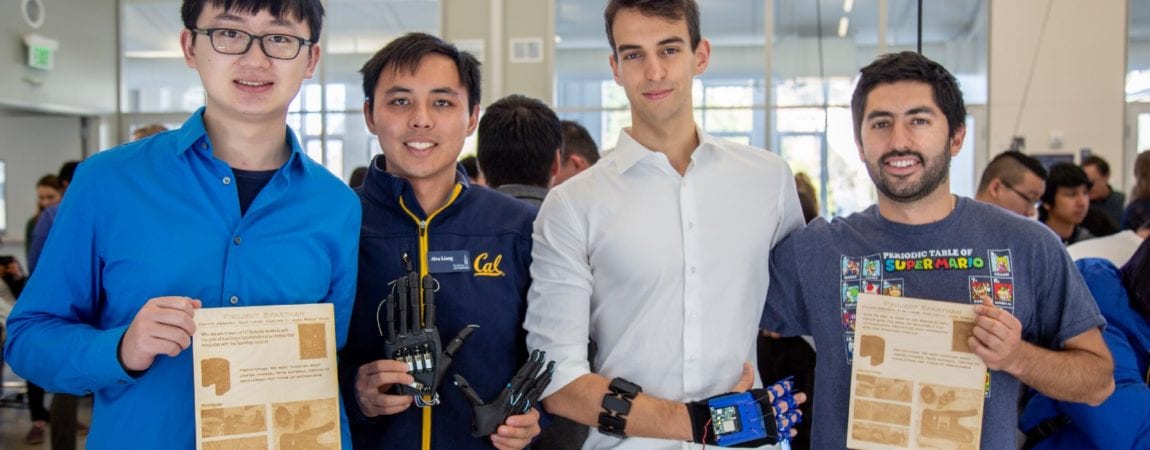From $30,000 to $200: These Berkeley students hope to slash the cost of prosthetic hands with their innovative controller board
By Jessie Ying
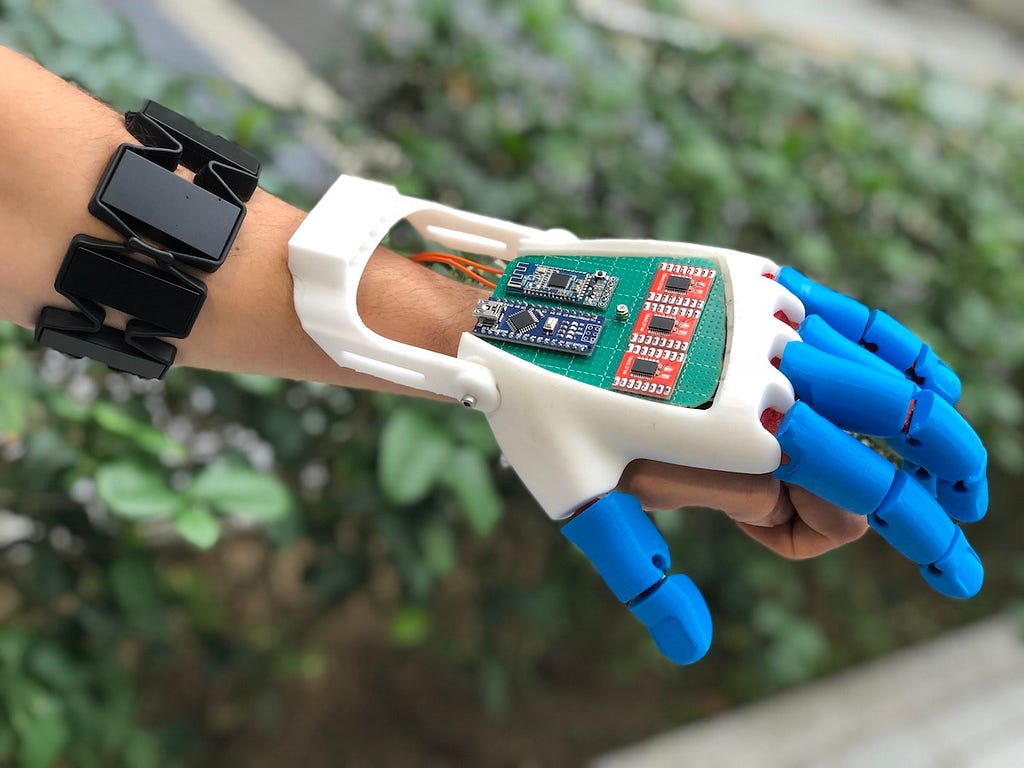
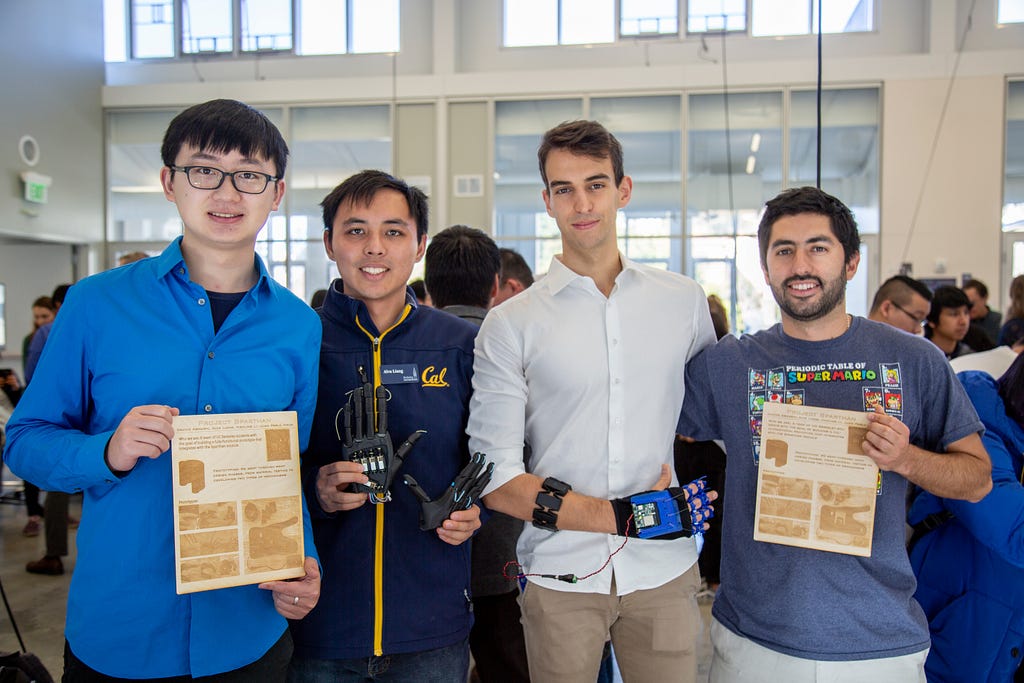

Why prostheses are so expensive
With Project Sparthan, the five students want to solve a problem in the prosthetics industry: bionic prostheses that are currently on the market are often too expensive for patients to afford. Bionic prostheses refer to prostheses that can move according to the muscle signals a person sends when he or she tries to make a hand gesture. Traditionally, these prostheses are custom made to fit the particular size and need of an individual. Every device needs to be built from scratch since there’s no module available that is compatible with a wide range of devices. These factors have made bionic prostheses extremely expensive with a price tag of over $30,000. Some patients that have the financial resource to afford good health insurance are able to have this cost covered. However, for the vast majority of people with disabilities, this price makes bionic prostheses simply unattainable. They have to settle for “dumb” prostheses that don’t move and have no functionality. In developing countries, even those can be difficult to afford.“We want to tackle this problem by putting all the expensive parts in one single module,” Davide, one of the founders of Project Sparthan, said.
How to make prostheses more accessible
A bionic prosthetic hand is made from two main parts: a mechanical hand and an electronic controller. With the rise of 3D printing technology, a mechanical hand no longer needs to go through the traditional cost-intensive manufacturing process. With a 3D printer, it can be printed for less than $10. So what makes a bionic prosthesis expensive is the electronic controller: the materials needed and the skills involved are not as readily available as 3D printing. Therefore, what the Project Sparthan team did was: they packed all the electronic control components into one small module that’s compatible with existing 3D-printed hand models. Prosthetics developers can then take these modules, plug them into their hand models, and get bionic prosthetic hands that function almost the same as custom-made ones. This module makes prostheses much more scalable, reducing the manufacturing cost, and thus also reducing the end price for people with disabilities.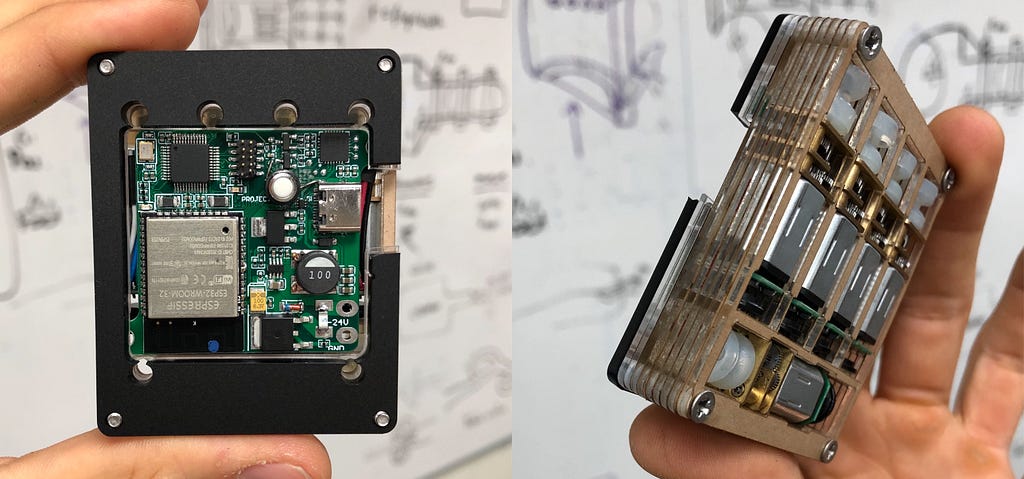
Who needs cheaper prostheses
One group that will benefit the most from this are children who have congenital upper limb deficiency that cause them to have only one or no hand since birth.“The problem with children is that they need to change prostheses as they grow. So prostheses providers have an upscale program: when you grow, they take it back and give you a new one with a different size,” Davide explained.With traditional prostheses in which everything is custom-made from scratch, upscaling means replacing every component, making the already expensive product even more unaffordable. However, with the Sparthan Module, providers don’t need to replace every component of the hand. All they need to do is to 3D print a bigger hand, plug the old module back in and it’s ready to go.
Davide did the math, “With our board, a single prosthesis will be around $200. Later when you need to change it, the cost will be less than $10 each time.”
From prosthetic hands to exoskeletons
As the project developed, the team quickly realized that their module can benefit more people if it is compatible with not only prosthetic hands, but also exoskeletons. Exoskeletons are assistive devices that help people who have hands but have difficulties moving them due to spinal cord injuries. People with this disability are greater in number compared to those that need prostheses — more than 288,000 people have this condition. There are exoskeletons that assist this population, but they are either very bulky or lack the functionality of individual finger control. To tackle this problem, the Project Sparthan team added a micro motor for each finger into the module. Once muscle signals are detected, the motor spins and pulls the desired finger in, acting as the muscle in the arm. This will greatly increase the functionality of exoskeletons as users will be able to perform a much wider range of hand gestures by moving individual fingers. Having motors in the module is also useful for people who are amputated below the wrist. Most current prostheses are made for people who are amputated above the wrist and can use their own muscle to complete gestures, lacking any force generating mechanism to move the fingers itself. By having motors on the board, the Sparthan Module allows people to move their hands no matter where they are amputated.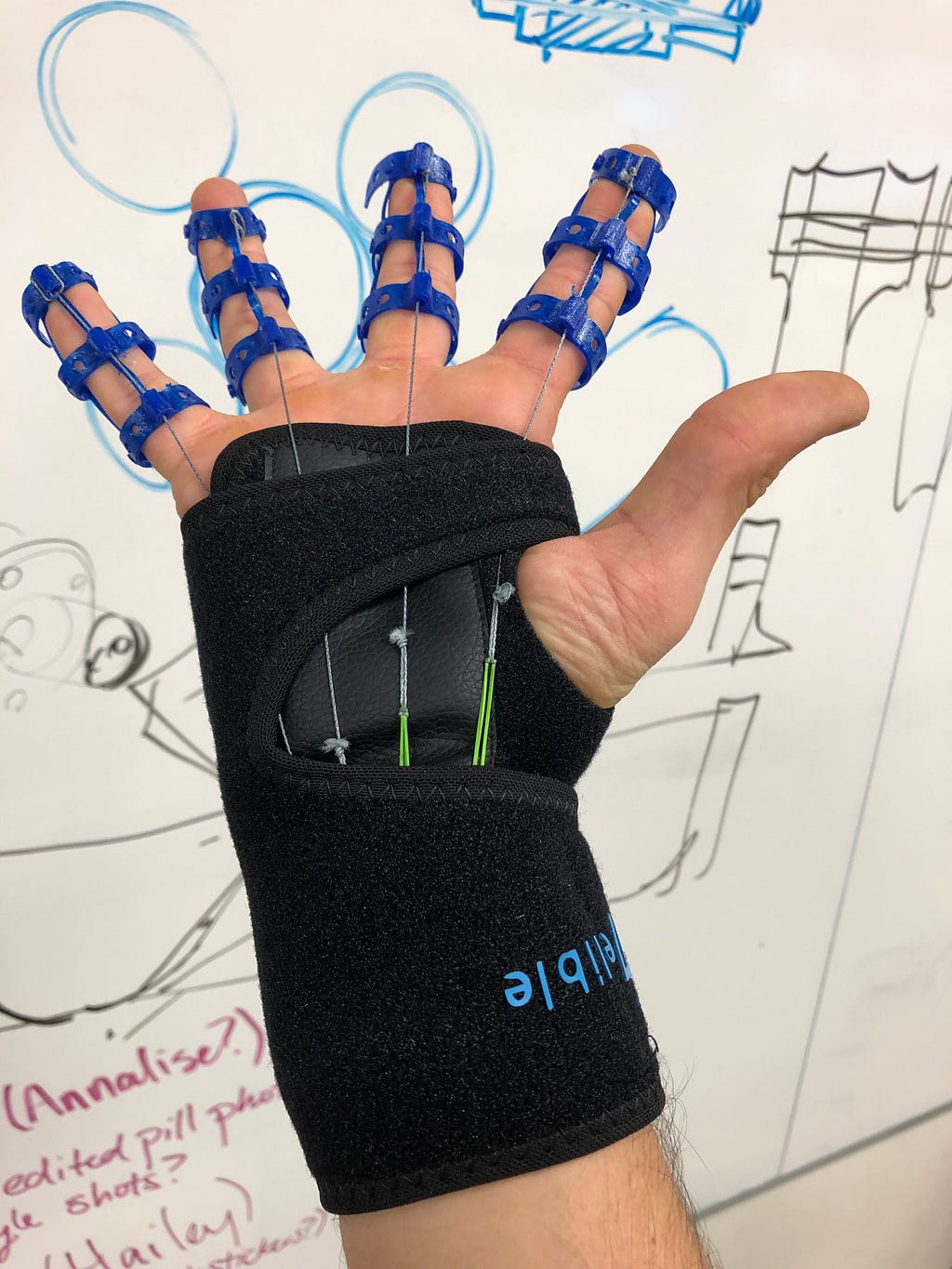
Saving the environment
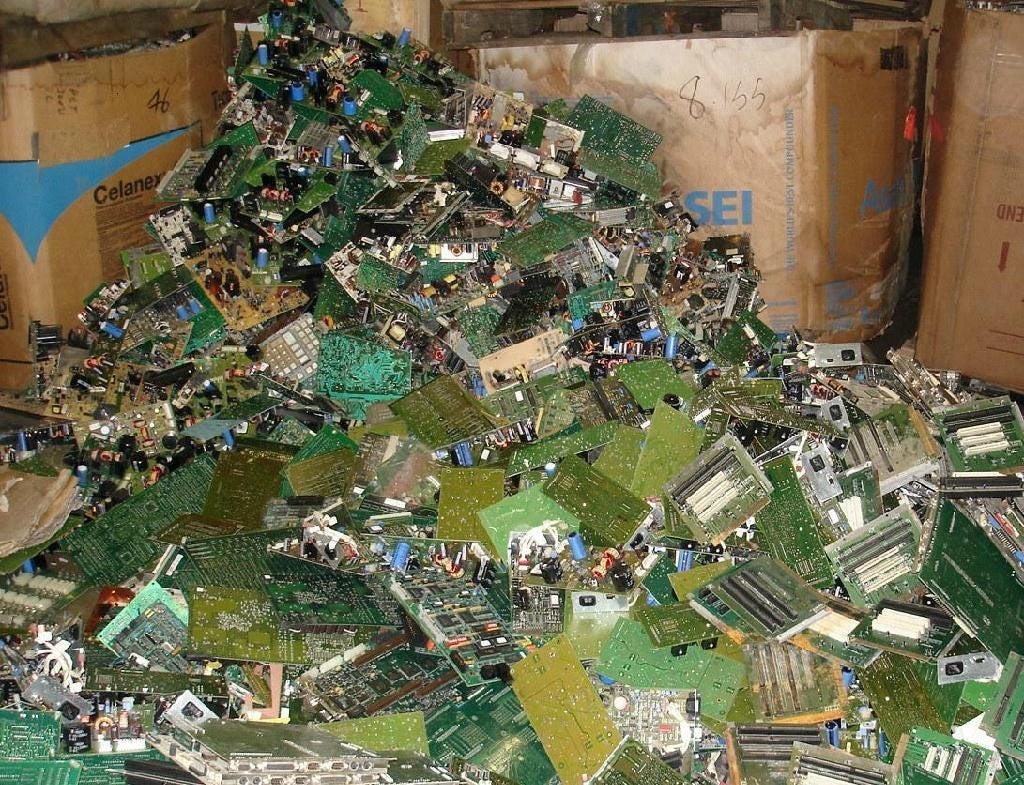
An international collaboration
Since one of the members on the Project Sparthan team, Alex, is based in Hong Kong, the team decided on a structure to maximize efficiency and minimize cost. They broke up the development of the board into two parts: electronic design and mechanical design. Alex, who has a strong background in electronic engineering, took charge of designing the board. He then sourced materials from Shenzhen, China, a city that enjoys close proximity to Hong Kong, at a price that is significantly cheaper than in the U.S. The materials were then shipped to Berkeley where the rest of the team validated the design, assembled, tested and programmed the board. The team usually communicated online, however, they got a chance to meet in person this spring through a course called Global Product Development at UC Berkeley which the team members were enrolled in.“We are really grateful that Jacobs (the institute that offered the class) provided us with the opportunity to meet our team member in Hong Kong in person. The face-to-face human experience is very valuable,” Davide said.
A campus-wide effort
The team said they received help from both within the Fung Institute that houses the Master of Engineering program and outside of it. Within the institute, they received guidance from Fung Fellowship innovation coach Jennifer Mangold who connected them with professionals that have worked in the medical device industry and people that are in charge of maker spaces. Outside of Fung, they partnered with a student organization called Healthcare Consulting Group at UC Berkeley. They helped the team develop a business plan for the Sparthan Module and researched about competitors like Open Bionics, a UK company that builds 3D printed bionic prostheses.
Going forward
The team has released an alpha version of the module to another student organization EnableTech for feedback. They are also working with another group of MEng students who are also building prostheses, providing them with the Sparthan Module and testing it out. The team hopes to develop a toolkit when the module hits the market. Prosthetics developers can choose to pay more and get the module, together with necessary 3D printing materials, all shipped to them, making mass producing prostheses even easier.“For this project, I get to combine my passion for technology and social impact. I think this is the best thing you can do as an engineer,” Davide concluded.Connect with the Project Sparthan team: Davide Asnaghi: www.linkedin.com/in/d-asnaghi Haoling Li: www.linkedin.com/in/%E6%98%8A%E7%81%B5-%E9%BB%8E-401166178/ Alva Liang: www.linkedin.com/in/alvaliang Juan Pablo Viaux: www.linkedin.com/in/juan-pablo-viaux-ab630a27 Alex Wong: www.linkedin.com/in/alex-wong-45a242130/
From $30,000 to $200: These Berkeley students hope to slash the cost of prosthetic hands with… was originally published in Berkeley Master of Engineering on Medium, where people are continuing the conversation by highlighting and responding to this story.


